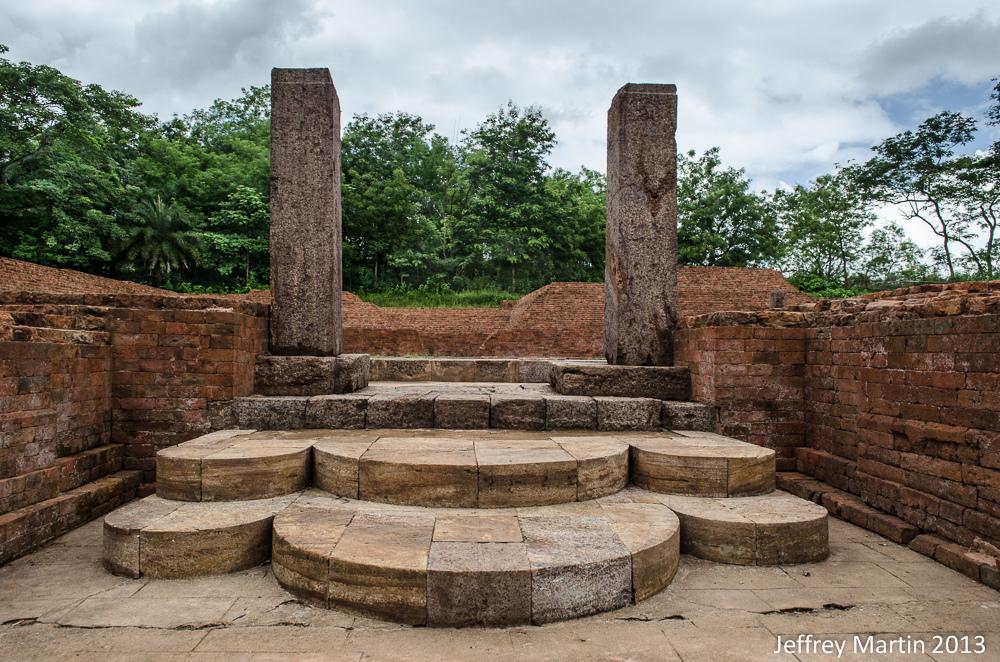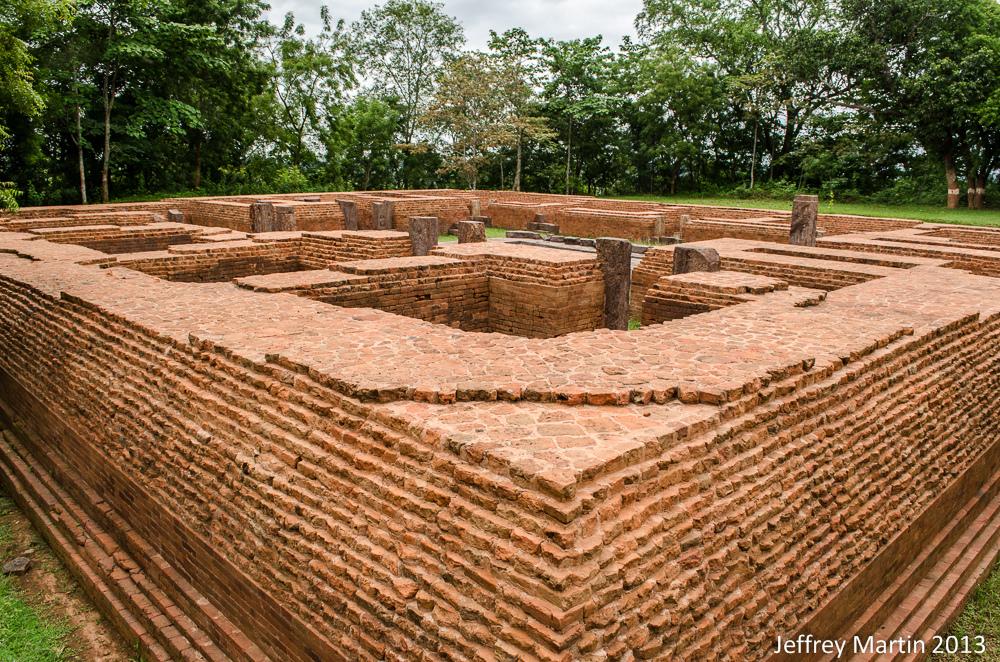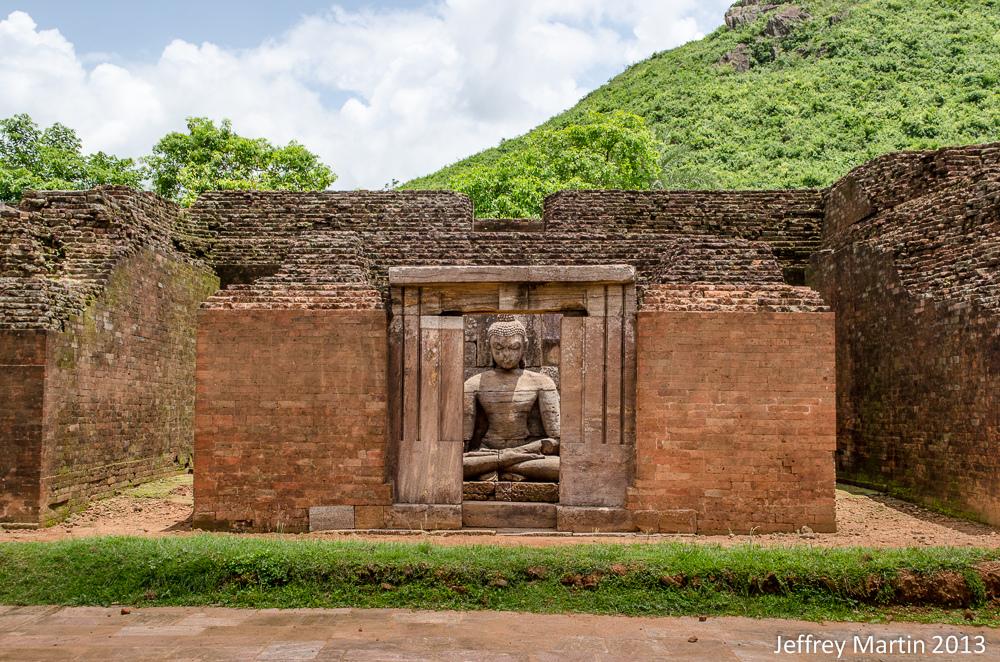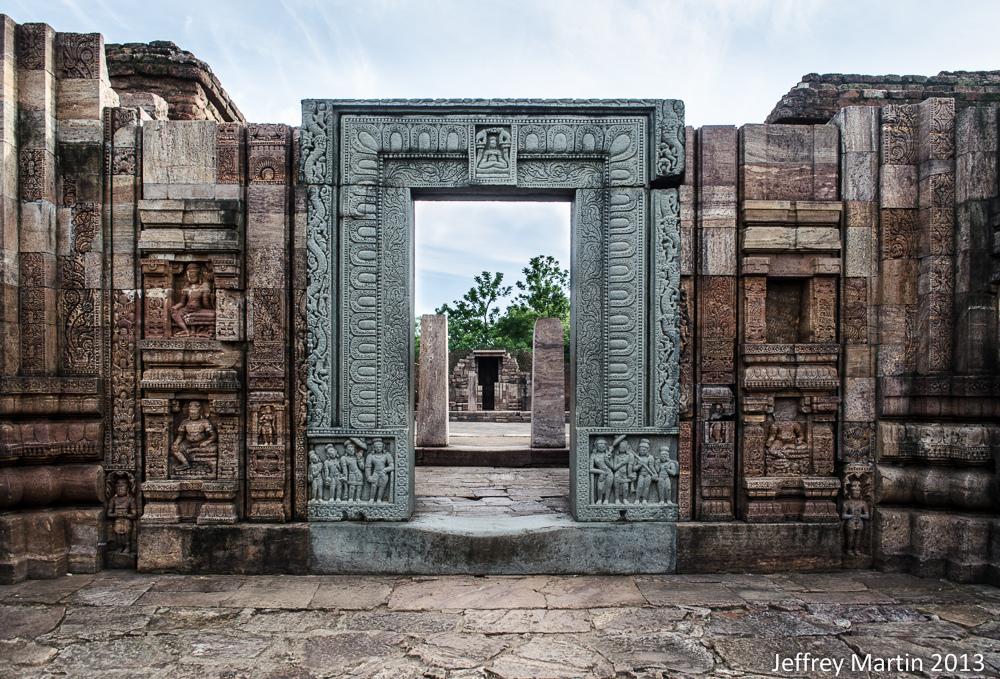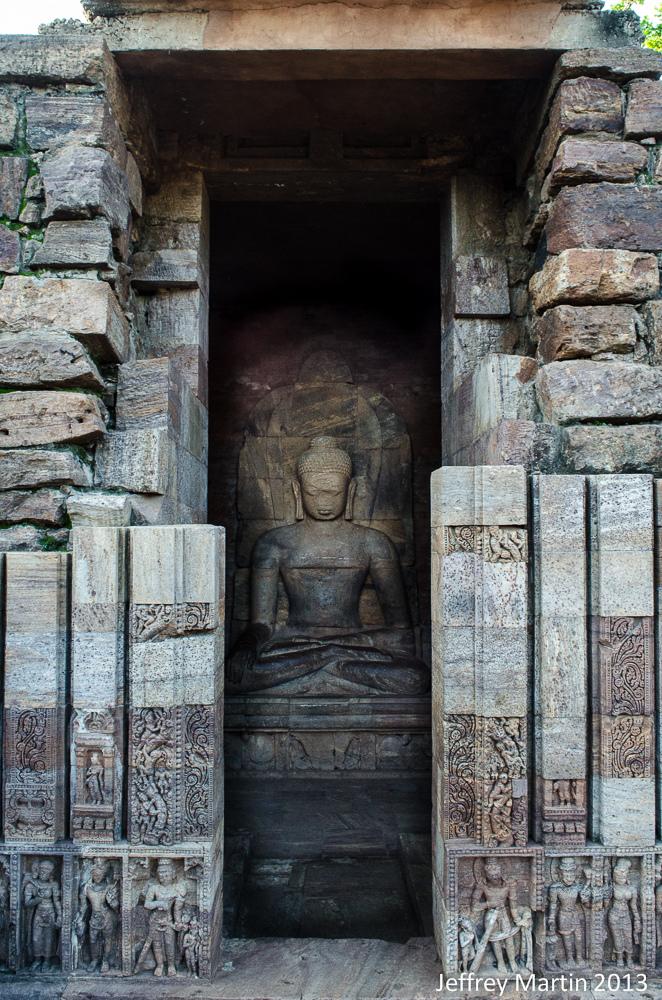In the years after the Buddha and the conquest of Asoka, the sasana moved east and became widespread throughout the contiguous area made up of the modern states of Andhra Pradesh, Odisha, West Bengal and Bangladesh. Asoka’s brother, in fact, is said to have retired to Kalinga to practice Buddhism and the emperor to have had a temple built for him. He is also said to have had a stupa erected in Odisha to house one portion of the Buddha’s relics. This very stupa may have been discovered at one of the sites located in an area referred to today by local guides and the tourist bureau as the Buddhist Triangle.
It lies only 100km north of modern Bhubaneswar, a 90-minute drive in good traffic, in an alluvial plain of rice fields and sugar cane dotted with low lying hills of 150-300 meters. In the Oriya language hill is known as giri, and the Buddhist sites with strong connections to the early history of Vajrayana all bear the suffix: Lalitgiri, Udayagiri, and Ratnagiri. Rediscovered in the 19th century by Indian archeologists, the earliest evidence in this triangle dates to the second century BCE, with most construction having occurred between the 5th-13th centuries, a period concurrent with the emergence of Vajrayana.
The Lalitgiri monastery complex is accessible by a dirt path winding through a grove of banyan and bodhi trees. The grass is well tended by local herders who bring their cows to graze. What are left of the buildings are floors, the lower portions of walls, and the bottom halves of larger stupas. A group of smaller votive stupas exist mostly intact. The layout of the place is clearly discernible from the remains, and the statuary that hasn’t been carted off is collected in a small building at the end of the path (in which photography is prohibited). Just behind this, and up a short flight of stairs, the remains of a great stupa sit atop a hill overlooking rice fields and surrounded by tress in with a tribe of langurs sometimes come to feed. This may be the stupa erected on the orders of Asoka. A relic casket was found inside and is held by the government of Odisha to be displayed in the State Museum in Bhubaneswar.
A short drive across the Birupa river is the monastic complex of Udayagiri. The approach is more exposed than at Lalitgiri. Here there are fewer trees, the grass grows higher, and while there is no sign of grazing cows, you may pass villagers carrying bales of cut grass and wood. With a turn in the path the trees disappear and the remains of a 10th-century stupa can be seen against a small green hill. Buddhas of the four cardinal directions are ensconced in the structure and look out through bars protecting them from treasure hunters. Further up the gently sloping hill, statues of bodhisattvas stand in waves of rolling green grass before a second monastic complex featuring a delicately carved doorway fronting a room with a 2-meter Buddha. A second path leads down one small slope and up another before a clearing opens with an eye-catching splash of color, an active Hindu shrine amongst the ruins of the monastic complex. The highlights here include a collection of votive stupas, another beautiful doorway and a Buddha of large proportions.
The site of Ratnagiri is only five kilometers away and is unique among the three for being situated on the edge of a village. In fact, according to zoning regulations, the villagers live within the protected heritage site. If you come out early in the morning, or late in the day, you can see them crossing the site to get to their homes. Ratnagiri is also unique in having a state museum (housing art from all three sites), in front of which sits the Toshali Resort, a hotel convenient to explorers of Odisha’s Buddhist Triangle. The archeological site itself is the smallest of the three, but features an impressive doorway, a large Buddha, the remains of a great stupa, a collection of votive stupas, and a Mahakala temple converted into a Hindu Mahakali shrine. The view here at sunset is worth setting aside a visit for late in the day.
The area around and within the Buddhist Triangle is dotted with the remains of many ancient Buddhist sites of study and worship. Anyone with time and an eye for antiquities will enjoy roaming the countryside. One other well-marked site worth exploring and not typically included in itineraries is Langudi Hill. It is less well excavated than the main three, but a visit offers a chance to see how excavations appear in the early stages, as well as a fantastic panoramic view of the surrounding countryside. The stupa and monasteries here still have grass growing over them and about the only things that exist uncovered are a rock wall of carved stupas and a small collection of votive stupas and bodhisattvas. The area is presently being developed for tourism and a newly built tourist center is slated to be handed over to the Tibetan community of Chandragiri, Odisha.
During India’s early medieval period the area of the Buddhist Triangle housed a learning complex rivaling those of Taxila, Nalanda, and Vikramshila. It was called the Puspagiri Mahavihara (sometimes the Puphagiri Mahavihara) and flourished for several hundred years between the 7th-13th centuries. When the Chinese monk Xuanzang travelled through the area in the early 7th century, he found hundreds of viharas and thousands of monks. Puspagiri is also noted in inscriptions found a bit further south in the town of Nagarjunakonda in modern day Andra Pradesh.
No one has yet, however, been able to solidly identify any one site in the Buddhist Triangle as Puspagiri. Some have pointed to Ratnagiri. Others have suggested that Puspagiri was a name given to the collection of monasteries scattered across these hills. It may be that Puspagiri is in fact one large monastery that has not yet been found. Odisha is, after all, one of India’s least developed states and lacks the cash for large scale excavations.
But that it has strong claims to being an early center of Vajrayana practice and learning is not in doubt.
Other entries in this series:
Puspagiri: The Odisha Circuit
Puspagiri: Echoes of the Tantric Past
Photo albums (external link):
Dhauligiri
Lalitgiri
Udayagiri
Langudi
Sixty-Four Yogini Temple
Odisha State Museum
